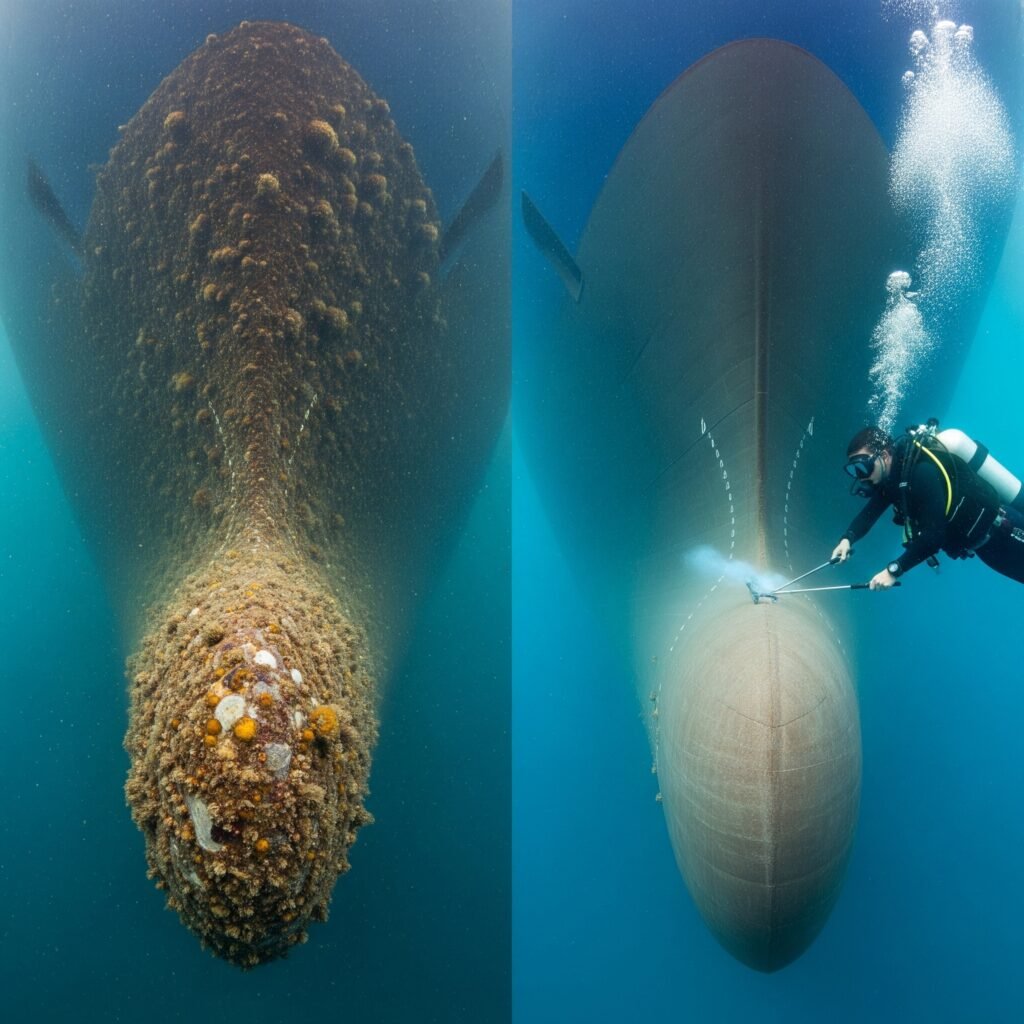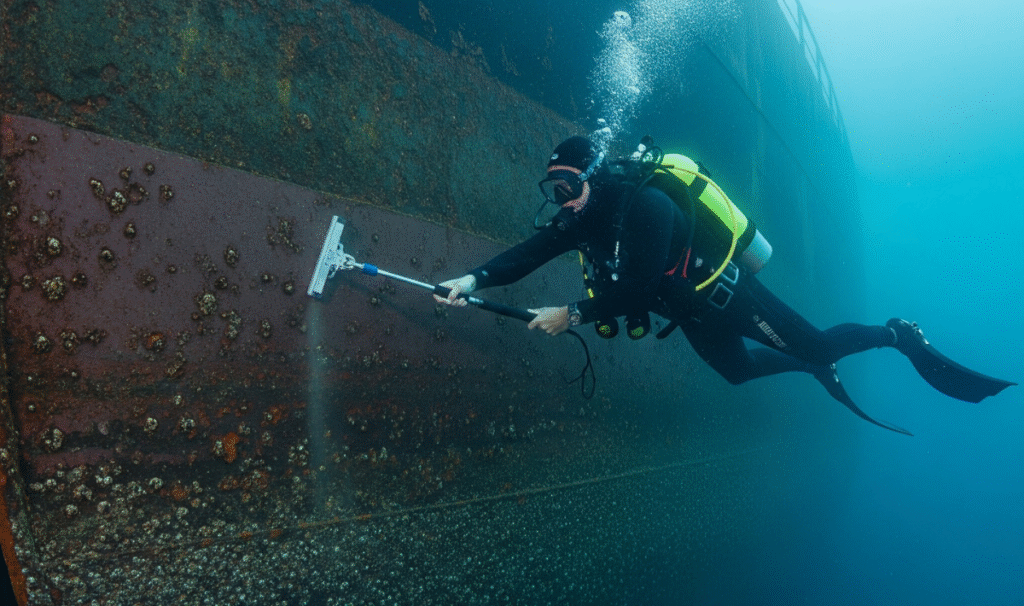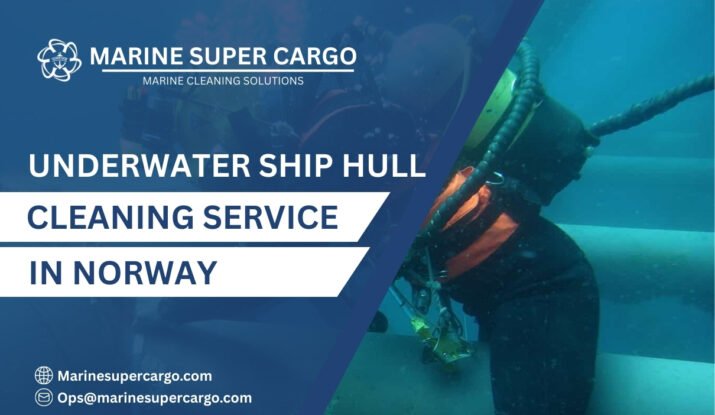When you picture Norway, fjords probably come to mind—towering cliffs, glacial waters, fishing villages clinging to the shore. But beyond its scenic beauty, Norway is one of the world’s true maritime powerhouses. With shipping routes stretching from the stunning Arctic Circle to busy trade routes in Europe, Norway’s ports are vital arteries of global commerce.
To keep this lifeline flowing smoothly, vessels must be maintained properly. One of the most underrated but vital services is underwater ship hull cleaning in Norway. It isn’t just about scraping off barnacles—it’s about boosting efficiency, ensuring long-term safety, and preserving the pristine environment Norway is famous for.
Let’s dive into the underwater ship hull cleaning in Norway—and why it should never be overlooked.
What is Underwater Ship Hull Cleaning in Norway?
Ships are constantly on the move, carrying goods between continents or traveling through icy, nutrient-rich waters. Over time, their hulls gather “uninvited passengers”—barnacles, algae, mussels, and other marine organisms. This biofouling creates drag, slows the vessel down, and forces engines to burn more fuel just to stay on course.
Underwater hull cleaning removes this accumulation. Using divers and robotic technology, ships in Norway are cleaned below the waterline with brushes, scrapers, and advanced suction systems that protect protective coatings while restoring smooth surfaces.

The Hidden Cost of Biofouling
Think of biofouling as constantly driving your car uphill with the handbrake on. Even if you don’t notice it right away, over time, the performance gap grows, and fuel costs skyrocket. Studies reveal that hull fouling can cause fuel consumption to rise by 30–40%, a staggering figure for an industry already navigating tight margins.
Fuel Efficiency and Economic Impact
This is why underwater ship hull cleaning in Norway is a financial no-brainer. Clean hulls reduce drag, meaning ships move more efficiently across often challenging Norwegian waters. Fuel bills drop, voyage times shorten, and operators directly benefit.
For shipowners managing fleets, the savings gained from regular cleaning far outweigh the costs of the service itself. It’s an investment that pays off in every nautical mile.
Corrosion Prevention and Maintenance Benefits
When marine life attaches to a hull, it traps moisture and fosters corrosion, peeling away protective coatings and weakening structural integrity. For a ship navigating the icy waters of Northern Norway, where reliability is critical, such damage is a serious risk.
Regular underwater ship hull cleaning in Norway halts corrosion before it takes hold, prolonging vessel life, reducing unexpected repair costs, and ensuring structural reliability.
Meeting International Safety Regulations
Norway’s maritime sector is deeply embedded in global trade. Ships must comply with strict regulations from the IMO, and fouled hulls are a quick reason for inspection delays or fines.
Scheduling hull cleanings allows Norwegian ship operators to remain aligned with international safety requirements and avoid costly interruptions when docking abroad.
Lowering Emissions by Reducing Drag
The shipping industry accounts for about 3% of global carbon emissions. According to imo.org, reducing drag is one of the simplest yet most effective ways to slash bunker fuel consumption and emissions.
By choosing underwater ship hull cleaning in Norway, operators do more than save money—they actively contribute to sustainability targets. Every reduced ton of fuel means less carbon released into Norway’s fragile Arctic ecosystems.
Preventing Invasive Species in Norwegian Waters
There’s another ecological risk: invasive species. The MARPOL Convention highlights how organisms hitch rides across oceans and invade new ecosystems, overwhelming native species.
Norway’s fjords and cold-water habitats are globally treasured. Hull cleaning protects these waters from unwelcome species, helping maintain balance and biodiversity.
Norway’s Role as a Global Shipping Hub
From Bergen to Tromsø, Norway’s ports service vessels traveling Arctic, Atlantic, and Baltic routes. Stopping for underwater ship hull cleaning in Norway is practical, efficient, and aligned with global shipping demands.
Expert Marine Workforce and Facilities
Norwegian facilities follow international best practices outlined by imca-int.com and iaphworldports.org. Add in highly trained divers and robotic innovations, and the result is world-class services tailored for even the harshest conditions.
How Underwater Hull Cleaning Works
Step-by-Step Cleaning Process
- Inspection – Divers or drones assess fouling levels.
- Cleaning Stage – Brushes, scrapers, or hydraulic tools remove organisms.
- Polishing for Smoothness – Hull surfaces are refined to reduce drag.
- Debris Management – Waste is collected to prevent pollution.
- Final Check – Ensures coatings are intact and compliance is met.
Modern Tools and Technology Used in Norway
Norway increasingly deploys remotely operated vehicles (ROVs), eco-suction technologies, and debris filtration systems. These combine efficiency with environmental responsibility—essential for protecting vulnerable fjord ecosystems.
Seasonal Waters and Arctic Conditions
Norway’s maritime environment is unique. Seasonal marine growth, harsh winters, and icy waters all affect fouling rates and cleaning logistics. Winter seas are more difficult for divers, making robot-assisted cleaning more practical.
Balancing Costs and Cleaning Schedules
Hull cleaning can’t be done too often, or you risk damaging antifouling coatings. Leave it too long, though, and biofouling returns in force. Experts recommend underwater ship hull cleaning in Norway every 6–12 months, depending on vessel use.

Eco-Friendly Cleaning Innovations
Sustainability-first solutions are rapidly developing. Biocide-free antifouling paints, nano-coatings, and UV-light disinfection technologies are all being trialed to reduce fouling while minimizing environmental footprint.
AI, Robotics, and Predictive Maintenance
Imagine sensors that continuously record hull performance and automatically signal when fouling starts to drag efficiency. This is the future. In Norway, where technological innovation is a national strength, expect robotics and AI systems to lead the transformation of underwater ship hull cleaning in Norway.
Conclusion
Hull cleaning may happen out of sight below the waterline, but its impact is far-reaching—delivering value in efficiency, safety, and sustainability. The three key benefits of underwater ship hull cleaning in Norway highlight its importance:
- Major fuel and cost savings through drag reduction.
- Improved safety and vessel longevity with corrosion prevention and full regulatory compliance.
- Environmental protection, lowering emissions while safeguarding Norway’s pristine marine ecosystems.
For shipowners, hull cleaning is more than compliance—it’s a smart strategy. By partnering with experts like CleanShip.co, operators ensure efficient, sustainable, and future-ready shipping in Norway.
FAQ:
Q1. How often should ships undergo hull cleaning in Norway?
Every 6–12 months, though Arctic routes and seasonal fouling may demand more frequent cleaning.
Q2. Does hull cleaning damage protective coatings?
No, when done professionally with modern tools, coatings remain protected while fouling is removed safely.
Q3. How does hull cleaning lower emissions?
By reducing drag, ships burn less fuel, directly cutting greenhouse gas emissions.
Q4. Why choose Norway for underwater ship hull cleaning?
Its strategic maritime location, advanced facilities, and skilled workforce make it ideal.
Q5. Can hull cleaning stop invasive species?
Yes. By scrubbing off biofouling, underwater ship hull cleaning in Norway prevents harmful species from entering and threatening local marine life.


